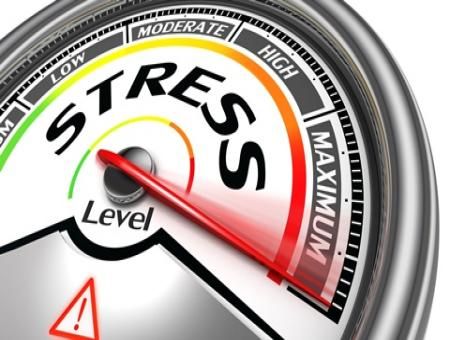A Stroke Patient Should be Rushed Immediately to Hospital!
By Dr. Manish Vaish in Neurosurgery , Neurosciences
May 23 , 2017 | 2 min read
Your Clap has been added.
Thanks for your consideration
Share
Share Link has been copied to the clipboard.
Here is the link https://www.maxhealthcare.in/blogs/stroke-patient-should-be-rushed-immediately-hospital
You need to raise awareness on taking the stroke patient to the hospital at the earliest to reduce chances of complications.
Explaining the stroke Dr. Manish Vaish, Associate Director, Neurosurgery, Max Hospitals says that “A stroke is the sudden death of brain cells in a localised area due to inadequate flow of oxygenated blood. Without access to the blood that supplies oxygen and nutrients and removes waste products, brain cells begin to die quickly. Depending on the region of the brain affected, a stroke may cause paralysis, speech impairment, memory loss and reasoning ability, coma, or even death.”
However, despite being a fairly common medical emergency, people often do not know what to do when someone in the family suffers a stroke attack. “Stroke occurs rapidly, therefore, their symptoms also often appear suddenly, without warning. However, paying heed to some early signs like:
- Confusion, including trouble with speaking and understanding,
- A headache, with altered consciousness or vomiting,
- Numbness, particularly on one side of the body,
- Trouble with seeing, in one or both eyes and
- Trouble with walking, including dizziness and lack of coordination
To know more about symptoms and signs of stroke
And taking the patient immediately to the hospital could avert stroke and reduce complications.
To help patients and their families receive timely treatment, the American Stroke Association has devised a patient-friendly code titled FAST – F for Face drooping, A for arm drooping, S for speech slurring and T for time to call the ambulance. As Dr. Vaish stated earlier, an early admission is very important for effective brain stroke treatment, in fact, medical guidelines state that the stroke patient should reach the hospital within four-and-a-half hours of the onset of the stroke to be eligible for any treatment.
The incidences of stroke in the country are rising sharply, especially in younger people, and this could be attributed to the increasing prevalence of risk factors, such as poor lifestyle choices, high-fat diet and low levels of physical activity.
“Giving the rising incidences of stroke in the country, it is not only important to aware people around the symptoms and the importance of quick hospital admission, but also about the available treatment modalities.
Explaining the emergency stroke management Dr. Vaish says, “The thrombolytic therapy is used to quickly dissolve the block and allow the blood flow. These are mainly used for ischemic strokes. At the onset of stroke, the thrombolytic medications should begin within 3 hours. This helps to avoid severe effects of stroke and disability. However, in the case of internal bleeding, this therapy doesn’t work.”
Who are the right candidates for surgery?
Stroke patients with internal bleeding in the brain, are often recommended surgery. Dr. Vaish explains, “The cause of bleeding helps in deciding the necessary treatment for the patient. During and after stroke, the patient is closely examined in an intensive care unit. To prevent or stop bleeding inside the brain, often surgical treatment is recommended. The surgery is usually done within first 48 to 72 hours after haemorrhage, depending upon the condition of the patient.”
However, after initial Stroke treatment, Dr. Vaish suggests lifestyle modification and controlling the risk factors, like smoking, obesity, hypertension, physical inactivity and stress. He says,“A healthy and balanced diet which is high in fibre, fruits, vegetables, and low in saturated fats, sugary and refined foods and salt along with exercises can not only prevent strokes to a great extent but could help live a healthier life post-stroke.”

Written and Verified by:
Related Blogs

Dr. Sitla Prasad Pathak In Neurosurgery , Neurosciences , Interventional Neurology
Nov 08 , 2020 | 2 min read

Dr. Priyank Uniyal In Neurosurgery
Nov 09 , 2020 | 3 min read

Medical Expert Team
Nov 09 , 2020 | 2 min read
Blogs by Doctor

Stress Can Cause Serious Disorders in Working Women!
Dr. Manish Vaish In Neurosurgery , Neurosciences
Apr 20 , 2017 | 1 min read
Most read Blogs
Get a Call Back
Related Blogs

Dr. Sitla Prasad Pathak In Neurosurgery , Neurosciences , Interventional Neurology
Nov 08 , 2020 | 2 min read

Dr. Priyank Uniyal In Neurosurgery
Nov 09 , 2020 | 3 min read

Medical Expert Team
Nov 09 , 2020 | 2 min read
Blogs by Doctor

Stress Can Cause Serious Disorders in Working Women!
Dr. Manish Vaish In Neurosurgery , Neurosciences
Apr 20 , 2017 | 1 min read
Most read Blogs
- CAR T-Cell Therapy
- Chemotherapy
- LVAD
- Robotic Heart Surgery
- Kidney Transplant
- The Da Vinci Xi Robotic System
- Lung Transplant
- Bone Marrow Transplant (BMT)
- HIPEC
- Valvular Heart Surgery
- Coronary Artery Bypass Grafting (CABG)
- Knee Replacement Surgery
- ECMO
- Bariatric Surgery
- Biopsies / FNAC And Catheter Drainages
- Cochlear Implant
- More...



